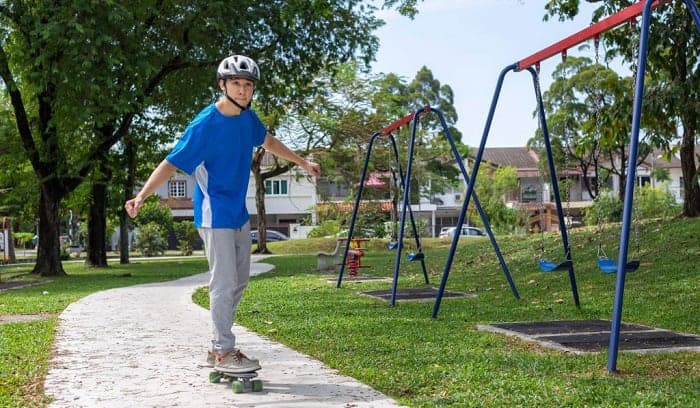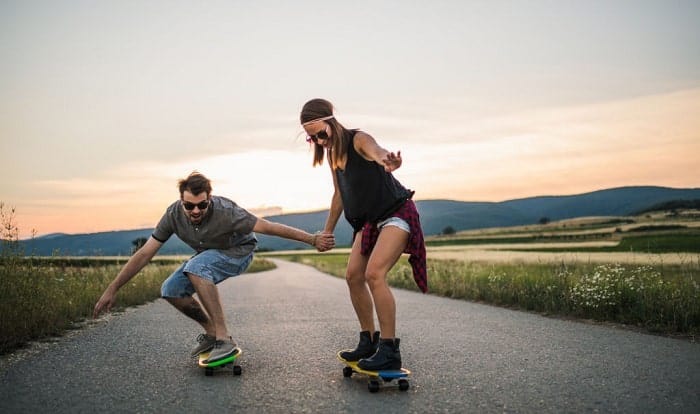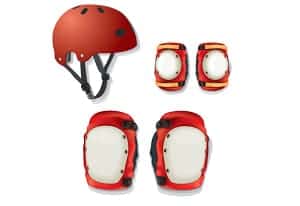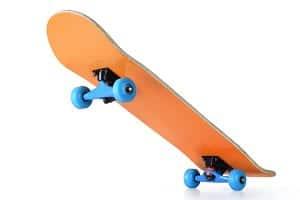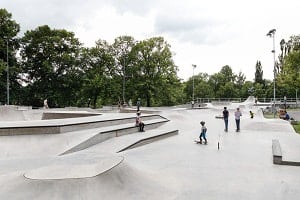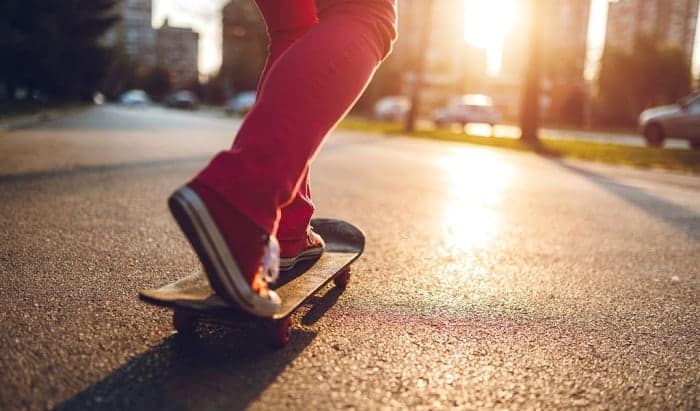Extreme sports are always on a teen’s summer checklist. And with many outdoor activities available to people of all ages, there’s no way you wouldn’t want to try one. Of these things, one you shouldn’t miss is riding a skateboard.
Don’t worry if it’s your first time skateboarding. Let me teach you how to ride a skateboard for the first time, and I’m sure you’ll love it.
Take note of the following phases of skateboarding to understand the details further.
- Foot positioning
- Pushing
- Transitioning
- Turning
- Getting comfortable
Table of Contents
What You Will Need
The best way to execute any sporting skill is by using the right pieces of equipment. Here are a few things you need.
1. Safety gear
Whether doing sports or anything that entails physical work, you need to spare yourself from cuts, injuries, and any accident. One of these precautions is having a complete set of safety equipment.
Begin by searching for a helmet. You may not always fall on your head in skateboarding, but it’s a delicate part of your body that, once damaged, might affect your mechanics.
And since wounds and cuts often come after a skateboarding accident, you should also wear a pair of knee and elbow pads. You need not cover your whole legs or arms, only those areas that are essential for moving, such as your knees and elbows.
You might also consider wearing a wrist guard to protect your hands’ joints should you fall on your skateboard. Also, shatterproof glasses will help if your eyes are sensitive to winds or tiny particles.
2. A quality skateboarding kit
Skateboarding is not only for fun and adventures. It’s also ideal for short commutes around your village or on your way to school. Hence, you need to invest in a skateboard that ensures enough durability and a long lifespan.
A quality skateboard comes with a heavy-duty deck. Most skateboard decks you see are of Canadian maple wood or a combination of bamboo and fiberglass. These materials hold a weight capacity of up to 300lbs. So, your weight will not be a problem for skateboard decks like these.
Another component you need to invest in is your wheels and trucks. When skateboarding for the first time, you need not gain high momentum immediately. That means you can be good with soft wheels. No matter the wheels you use, they should have enough shock-absorption capacity.
And for your trucks, pick the ones made with aluminum alloy. This material has ample tensile strength that maintains balance on the skateboard, especially when you lean on either side of it.
Lastly, be sure to check the board’s grip tapes, as these will matter in terms of safety and comfort during your ride.
3. A spacious and clean skateboarding area
It’s normal to fall out of balance or drive your skateboard to nowhere since you cannot take control of it on your first attempts. These instances suggest that you should avail yourself of a skateboarding area conducive to your practices.
You can look for an idle street or a skateboarding park spacious enough to let you perform simple skateboarding moves. Be sure that the area is also free of stones or any object that may clog into your wheels or disrupt your movements.
A pro tip: if you are in a skateboarding park or if you see skateboarders around, you can also seek advice or observe them riding. That way, you would know how they carry their skateboards well.
Step on Riding a Skateboard for the First Time
You can ride a skateboard in any way you want. But you can never yield the best results without knowing its fundamentals. See the steps as well as the tips for skateboard riding below to equip yourself better.
Step 1. Positioning your feet
A skateboard’s length is not enough to accommodate both of your feet. So, try to imagine sliding on a smooth surface. Assess which foot you are likely to place forward.
If you, naturally, put your right foot forward when sliding, you should also put the same foot on your skateboard deck. The other foot remains on the ground as you kick when pushing the skateboard.
Don’t get yourself into trouble by confusing which foot you are going to use forward. Also, note that your front foot’s and skateboard’s length should be in a parallel position.
Step 2. Pushing the skateboard
Pushing on a board is like walking, but only with a skateboard under your foot. For better maneuverability, your front foot’s tip should be near the inner bolts of the front truck of your skateboard.
Perform a walking motion using your back foot with a smooth kick to the back. Support it by putting some forward force on your skateboard deck using your front foot. Lift your back foot as soon as your skateboard gets some momentum.
Step 3. Transitioning
You will not have to push on your skateboard the whole time around. There will be times when you will have to glide, especially in downhill locations. One skateboard tip to perfect transitioning is knowing when to do it.
As soon as your skateboard gains some momentum, lift your back foot to your skateboard’s deck. It should be in a perpendicular position where your back foot’s arch is directly on top of the outer bolts of the rear trucks of the skateboard. Rotate your front foot outwards using your ankle to make the feet arches face each other.
Step 4. Turning
There are many ways to turn on your skateboard. But let me teach you beginner steps called the Carving Turn and Kick Turn.
The Carving turn does not require you to lift your foot or the wheels of the skateboard. You will have to loosen your trucks to do this trick. All you need to do is bend your knees and lean in the direction you want.
To do a Kick Turn, you will need to apply pressure on your back foot. Press on the tail and assist with your front foot to turn your skateboard’s nose in the direction you want.
Step 5. Getting comfortable
The best way to master basic skateboarding is by incorporating all these steps. You need not flip your skateboard on your first few rides. You only have to execute these movements continue to master their timing as well as the positioning.
From the foot positioning down to turning, you need to ensure your comfort. That way, you will know the adjustments to make with your skateboard and your way of riding.
Pro Tips
- Learn and practice how to fall on a skateboard or what to do if you get into an accident. That way, you’re less likely to suffer injuries from a skateboard ride.
- Keep track of your progress and areas that need improvement. Make sure you will work on them the next time you hit the road with your skateboard.
- Try to practice soon with less safety gear. This skateboarding tip will push you to be more certain about your movements and polish your execution.
Conclusion
You will never know how good of a skateboarder you can become unless you try. Thus, learning how to ride a skateboard for the first time is the best way to ensure you are doing things right. This reference is also necessary should you plan to level up your skateboarding skills.
On top of these, always prioritize your safety and comfort at all times. From there, learning and growth will follow. Did you enjoy this tutorial? Drop your thoughts in the comments section.

Hi, I am Charles Harris. I opened this site to write as much as I can about my biggest passion – skateboarding!
I started as a clumsy yet passionate rookie 10 years ago to now a still passionate yet much better skateboarder! But I have to tell you, the whole journey has always been fun and rewarding, indeed not without hardship.


